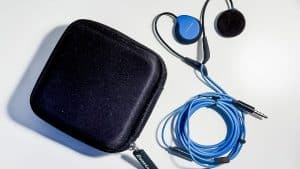Sprains and strains are some of the most common injuries you can pick up when exercising. Sometimes it seems like they’re almost inevitable, but they’re not. Do you know what exactly we mean by a strain or sprain? What causes them? The steps you can take to try to prevent them? Let’s take a look (https://longevity.technology/lifestyle/sprains-and-strains-causes-signs-prevention-types-treatment/).
First, we’ll cover definitions. Contrary to what you might think from common usage, sprains and strains aren’t actually the same thing, despite both causing pain, swelling and mobility issues. Sprains are felt in the ligaments, the connective tissue between two bones. You may have stretched this tissue too much, or it may have an outright tear. Strains have similar causes – stretches or tears – but they usually involve the muscles, or sometimes the tendons between muscle and bone.
This means that sprains are more common in joints like wrists, knees or ankles, generally because they’ve been pushed outside of their natural range of motion. Meanwhile, you most often find strains in your active muscles, areas like the hamstrings or the back. Sometimes they occur because of a single incident, such as trying to hoist a heavy box without bending your knees properly, but they can also be the result of lots of small, repetitive movements over time.
Activities that can cause sprains include those where you have to suddenly turn, like tennis or basketball. Strains are common in track events where you put pressure on the muscles to launch yourself into a sprint or a jump, but any movement with poor posture or inadequate rest periods, including regular housework, can cause issues.
How can you reduce these risks? Well, take a little more care. Warm up and cool down properly, allow yourself plenty of recovery time, especially if you’re already carrying an injury, make sure you use proper techniques and have the correct equipment (including shoes that offer enough support), and just continue to train and condition yourself.
You may end up with a strain or sprain anyway, but you can probably treat it at home with rest, ice, compression and elevation (RICE), plus over-the-counter painkillers. More severe cases may require a trip to the doctor. Braces, physical therapy or even surgery may be necessary.
Understanding strains and sprains is the first step to avoiding them, or at least managing them when they do occur.




